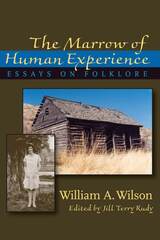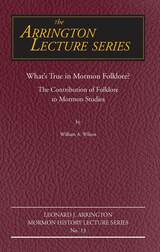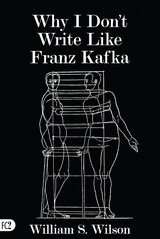4 books about Wilson, William

Marrow of Human Experience, The
Essays on Folklore by William A. Wilson
edited by William A. Wilson and Jill Terry Rudy
Utah State University Press, 2006
Composed over several decades, the essays here are remarkably fresh and relevant. They offer instruction for the student just beginning the study of folklore as well as repeated value for the many established scholars who continue to wrestle with issues that Wilson has addressed. As his work has long offered insight on critical mattersn--nationalism, genre, belief, the relationship of folklore to other disciplines in the humanities and arts, the currency of legend, the significance of humor as a cultural expression, and so forth--so his recent writing, in its reflexive approach to narrative and storytelling, illuminates today's paradigms. Its notable autobiographical dimension, long an element of Wilson's work, employs family and local lore to draw conclusions of more universal significance. Another way to think of it is that newer folklorists are catching up with Wilson and what he has been about for some time. As a body, Wilson's essays develop related topics and connected themes. This collection organizes them in three coherent parts. The first examines the importance of folklore. What it is and its value in various contexts. Part two, drawing especially on the experience of Finland, considers the role of folklore in national identity, including both how it helps define and sustain identity and the less savory ways it may be used for the sake of nationalistic ideology. Part three, based in large part on Wilson's extensive work in Mormon folklore, which is the most important in that area since that of Austin and Alta Fife, looks at religious cultural expressions and outsider perceptions of them and, again, at how identity is shaped, by religious belief, experience, and participation; by the stories about them; and by the many other expressive parts of life encountered daily in a culture. Each essay is introduced by a well-known folklorist who discusses the influence of Wilson's scholarship. These include Richard Bauman, Margaret Brady, Simon Bronner, Elliott Oring, Henry Glassie, David Hufford, Michael Owen Jones, and Beverly Stoeltje.
[more]

On Being Human
Folklore of Mormon Missionaries
William A. Wilson
Utah State University Press, 1981
A collection of narratives, humorous stories, and songs from Mormon missionaries that has become a classic study of narrative folklore. The 64th annual Faculty Honor Lecture, in the Humanities, Utah State University.
[more]

What's True in Mormon Folklore?
The Contribution of Folklore to Mormon Studies
William Wilson
Utah State University Press, 2008
13th volume in the Leonard J. Arrington Lecture Series
[more]

Why I Don't Write Like Franz Kafka
William Wilson
University of Alabama Press, 2002
In a 1978 New York Times book review, Kenneth Baker described Why I Don't Write Like Franz Kafka as: "...the most powerful New American fiction I have encountered in years. A demanding, exhilarating work." Nearly 25 years later, FC2 is proud to reissue this classic collection of short fiction by William S. Wilson that seems even more relevant today. It touches on controversies over the role of science in our lives and deals with cosmetic surgery and the medical uses of human embryos, heart transplants, and regenerated genitalia. And that's only the beginning. The story "Metier: Why I Don't Write Like Franz Kafka," implies that Kafka responded in his fiction to questions that no longer need to be asked in fiction. The epistolary story, "Conveyance: The Story I Wouldn't Want Bill Wilson to Read," is an intimate letter from a woman who had wanted to write fiction and who now challenges Wilson's reaction to her report of a tragedy. "Interim" chronicles the imaginary reforestation of Scotland and "Anthropology" turns on the actual moment in Structuralism when Claude Levi-Strauss relocates the ear to the back of the head in order to interpret a myth. Written with cool precision and a subtle touch, these meditations and metafictions will continue to reverberate for decades to come.
[more]
READERS
Browse our collection.
PUBLISHERS
See BiblioVault's publisher services.
STUDENT SERVICES
Files for college accessibility offices.
UChicago Accessibility Resources
home | accessibility | search | about | contact us
BiblioVault ® 2001 - 2024
The University of Chicago Press









